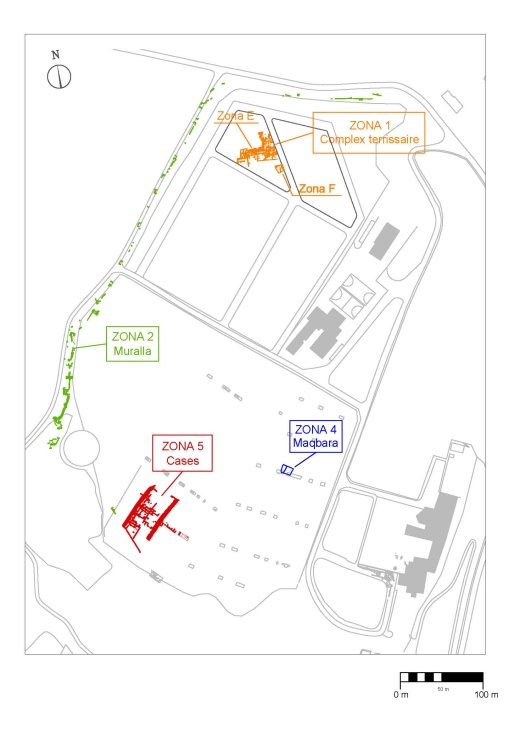The archaeological site of Pla d'Almatà (Balaguer, Lleida, Spain) is the deserted city of Madîna Balaghí, located in the so-called Upper Frontier of Al-Andalus.
Its 27 hectares are delimitated by a wall to the west and north and by River Segre cliffs to the east and south of it. There is also a castle in the south side that became a palace in the 11th century.
The Islamic occupation of Balaguer can be traced back to the 8th century and continued until the start of the 12th century. From this occupation, several houses, a maqbara and a series of pottery kilns have been excavated in Pla d’Almatà. Stretches of the walls and other architectural remains from this period have been found in the current city centre of Balaguer. Furthermore, the irrigation canal that starts in the river Segre and still irrigates a large cultivated area is contemporaneous of the Islamic city.
Madîna Balaghí fell under the rule of count Ermengol VI of Urgell in 1105, after a long siege, that resulted in the expulsion of Muslim population.


